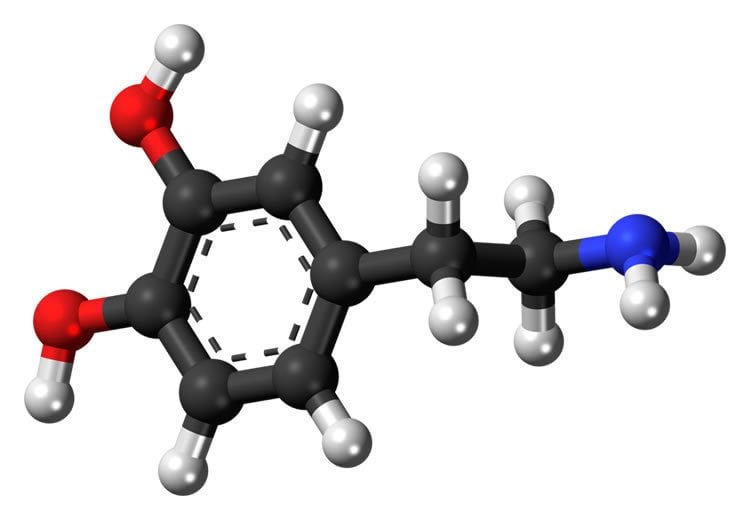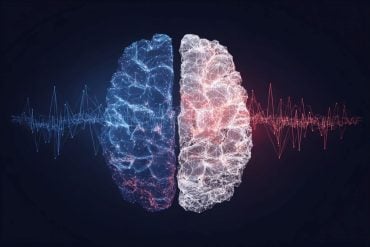Summary: Dopamine activation controls the ensemble activity of neurons and increases oscillatory activity in the prefrontal cortex.
Source: Oregon Health and Science University
Anyone who has savored a bite of chocolate or glanced at each new blinking notification on their smartphone is familiar with dopamine.
But that is not all dopamine does. This chemical neurotransmitter also plays a fundamental role in the prefrontal cortex of the brain, which controls higher functions such as paying attention, staying motivated, and making decisions.
Now, research in rodents reveals for the first time how dopamine changes the function of the prefrontal cortex. In a study published in the journal Cell Reports, researchers found that dopamine has little effect on individual cells. Instead, it generates sustained activity in the ensemble of cells in the prefrontal cortex that lasts for up to 20 minutes.
“Ensemble brain cell activity, just like ensembles of musicians who perform together, can have a different and greater effect than the activity of individual neurons,” said senior author Bita Moghaddam, Ph.D., professor and chair of behavioral neuroscience in the OHSU School of Medicine.
The coordinated ensemble activity initiated by dopamine lasted for many minutes after it was released.
“This may provide a mechanism by which dopamine supports complex functions that have to be sustained, such as motivation and attention to complete a task,” Moghaddam said.
Using optogenetic methods in the brains of rodents during active behavior, researchers stimulated dopamine neurons in the brain with light and then recorded the response in the prefrontal cortex. They detected a relatively weak signal among individual cells. However, a computational method of analysis discerned multiple forms of coordinated activity among cells in the prefrontal cortex that lasted several minutes following the initial burst of light.
In addition to the impact of dopamine on the ensemble activity, the study demonstrated that dopamine cells increase oscillatory activity, or brain waves, at the gamma range. Disruptions in brain oscillation at this high frequency had been previously linked to attention, as well as disorders such as schizophrenia and ADHD, but the cause of this disruption is not well understood.

The discovery of dopamine’s role provides fresh insight into a key mechanism in the brain. Dopamine in the prefrontal cortex of the brain plays a role in almost all aspects of high order cognition, including attention and behavioral flexibility. It’s also implicated in motivational and cognitive deficits of brain illnesses such as schizophrenia, addiction, and attention-deficit/hyperactivity disorder.
“This could explain why you need dopamine for sustained attention,” Moghaddam said. “It can help us understand how in disorders like ADHD, where there could be a dopamine deficit, that the impact may not be at individual neuron but the ensemble level.”
Funding: The study was supported by the National Institute of Mental Health, grant MH48404.
Source:
Oregon Health and Science University
Media Contacts:
Erik Robinson – Oregon Health and Science University
Image Source:
The image is in the public domain.
Original Research: Open access
“Dopamine Modulation of Prefrontal Cortex Activity Is Manifold and Operates at Multiple Temporal and Spatial Scales”.
Sweyta Lohani, Adria K. Martig, Karl Deisseroth, Ilana B. Witten, and Bita Moghaddam Cell Reports doi:10.1016/j.celrep.2019.03.012
Abstract
Dopamine Modulation of Prefrontal Cortex Activity Is Manifold and Operates at Multiple Temporal and Spatial Scales
Highlights
• Dopamine activation controls prefrontal cortex (PFC) ensemble activity and oscillations
• Concurrent influence on PFC individual unit activity is weak and heterogeneous
• Effects of dopamine are governed by behavioral state and phasic activity pattern
• Spatiotemporal diversity of dopamine’s effects may enable complex PFC computations
Summary
Although the function of dopamine in subcortical structures is largely limited to reward and movement, dopamine neurotransmission in the prefrontal cortex (PFC) is critical to a multitude of temporally and functionally diverse processes, such as attention, working memory, behavioral flexibility, action planning, and sustained motivational and affective states. How does dopamine influence computation of these temporally complex functions? We find causative links between sustained and burst patterns of phasic dopamine neuron activation and modulation of medial PFC neuronal activity at multiple spatiotemporal scales. These include a multidirectional and weak impact on individual neuron rate activity but a robust influence on coordinated ensemble activity, gamma oscillations, and gamma-theta coupling that persisted for minutes. In addition, PFC network responses to burst pattern of dopamine firing were selectively strengthened in behaviorally active states. This multiplex mode of modulation by dopamine input may enable PFC to compute and generate spatiotemporally diverse and specialized outputs.






